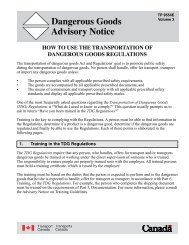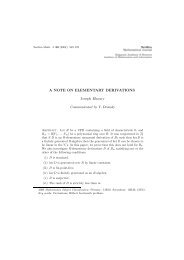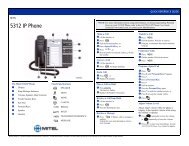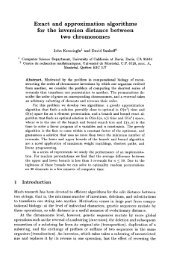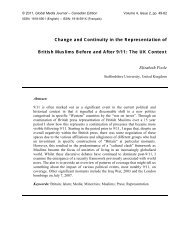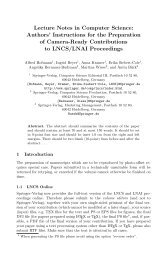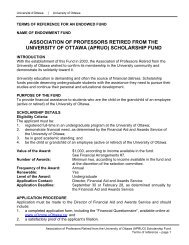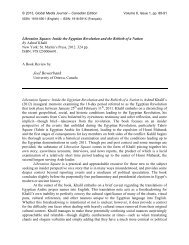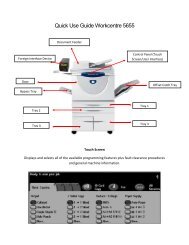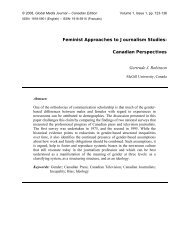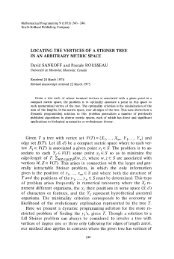PRACTICING PRECAUTION and ADAPTIVE MANAGEMENT ...
PRACTICING PRECAUTION and ADAPTIVE MANAGEMENT ...
PRACTICING PRECAUTION and ADAPTIVE MANAGEMENT ...
- No tags were found...
You also want an ePaper? Increase the reach of your titles
YUMPU automatically turns print PDFs into web optimized ePapers that Google loves.
VIII.C. Is PMRA practicing precaution? Conclusions <strong>and</strong> Recommendations.Historically, precaution in PMRA registration <strong>and</strong> re-evaluation decisions took primarily twoforms: (1) the reversal of the onus of proof; <strong>and</strong> (2) in risk assessment, precautionary safetyfactors (of various magnitudes) for estimating reference doses in classical toxicologicalassessments. More recently, additional precautionary elements have been introduced by movingfrom single to aggregate-exposure assessments, <strong>and</strong> to multiple exposure assessments forcompounds of (putatively) similar modes of actionUnder PCPA (2002) PMRA will have a statutory obligation to use the precautionaryprinciple in re-evaluations <strong>and</strong> special reviews. At present, it is unclear to everyone – includingPMRA – how this obligation will affect decisions in general, <strong>and</strong> the risk assessment process inparticular. This is, of course, precisely why, in its 2003-2008 strategic plan, PMRA notes that itintends to achieve its primary strategic objective (of protecting human health <strong>and</strong> theenvironment from unacceptable risks associated with the use of pest control products) by “…developing new science policies, methodologies <strong>and</strong> guidelines to assess risk <strong>and</strong> value,including a PMRA policy on use of the precautionary principle” (PMRA 2004b, p. 11).In developing such a policy, we suggest that PMRA:1) Make explicit what is required to trigger the application of precaution under PCPA(2002) 20.(2). In practice, this means that PMRA must produce a set of guidelines asto what constitutes both necessary <strong>and</strong> sufficient evidence that a product poses a“serious risk” to human health or the environment;2) Establish guidelines for how the “degree” or “extent” of precaution is determinedin registration <strong>and</strong> (particularly) re-evaluation decisions. Some progress has beenmade on this front by other institutions. For example, the Government of Canada inits document “A Canadian Perspective on the Precautionary Approach/Principle”(GOC 2001, p. 10), notes, as a guiding principle, that “Precautionary measures shouldbe proportional to the potential severity of the risk being addressed <strong>and</strong> to society’schosen level of protection”. But other criteria may be equally – if not more -important. For example, Goklany (2001, 2002) suggests that, all other things beingequal, the degree of precaution exercised in decisions should increase with theimmediacy, certainty, potential severity of the threat, <strong>and</strong> the cost <strong>and</strong> difficulty ofadaptation;3) Make explicit how, precisely, weight of scientific evidence is assessed during thereview process. Such a specification should include details on: (a) what informationsources were tapped for scientific information; (b) how the published scientificliterature was searched (e.g. search criteria); (c) what criteria were used to determinewhether a particular study was relevant to the decision at h<strong>and</strong>; <strong>and</strong> (d) how the“weight of evidence” associated with both a particular study <strong>and</strong> the collection ofstudies deemed relevant was determined;4) Make explicit how uncertainty – <strong>and</strong> in particular, different types of uncertainty –are to be addressed in the decision process. There are different types of scientificC. Scott Findlay & Annik Déziel – Potentially Practicing Precaution: Canadian Pesticide D-76Regulation <strong>and</strong> the Pest Regulation Management Agency



